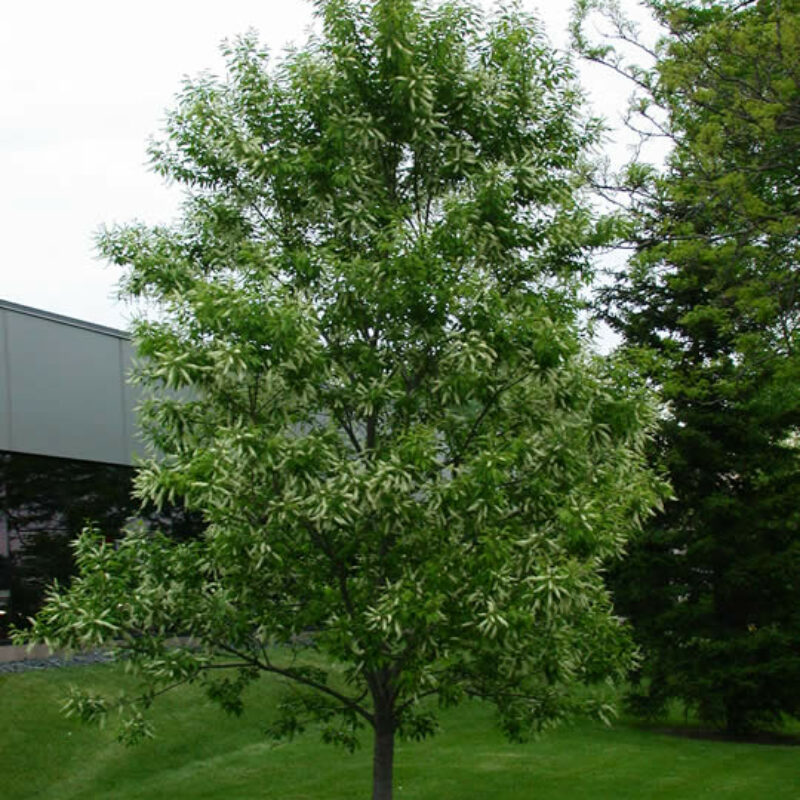Black CherryPrunus serotina
Aromatic, small-flowered, deciduous tree with a branchless trunk, up to 75' tall with a crown half its height. Largest member of the cherry trees. Widely sought for its rich brown wood. Produces tart, but edible fruit. Important food crop for birds and wildlife. Bark and roots contain hydrocyanic acid used in cough medicines for flavoring. White flower (1/2 inch), yellow fall color. Well suited for use as a flowering or shade tree. IT has wildlife value and can be used in woodland restoration, in upland buffers and for erosion control. This species has a low fire tolerance.
USDA symbol: PRSE2
General Information
| Plant Type | Tree |
|---|---|
| Height | 50 to 60 feet |
| Light Exposure | Sun, Part Sun, Shade |
| Soil Moisture | Dry |
| Bloom Color | White |

Tolerances
| Flooding / Inundation Tolerance | Moderate |
|---|---|
| General Resilience | 8 |
| Salt Tolerance | Medium |
| Stress Tolerance | Drought Tolerant, General Disturbance |
Pollinator Value: Very High
| Bloom Months | May to June |
|---|---|
| Larval Host of | Bees, Butterflies |
| Specific Pollinators Hosted | Andrena melanochroa, Satyrium titus |
| Pollinator Benefit | Insect Pollinated, Provides Nectar, Supports Generalists |
Project Planning
| Project Type | Boulevard, Erosion Control, Restoration, Upland Buffer |
|---|---|
| Coefficient of Conservatism | 4 |
| Herbivore Sensitivity | Low |
| Lifespan | Perennial |
| Rate of Spread | Slow |
| Soil Stabilization | Deep |
| Vegetative Reproduction | Clonal |
Range
| County | Aitkin, Anoka, Becker, Beltrami, Benton, Blue Earth, Brown, Carver, Cass, Chisago, Clay, Clearwater, Crow Wing, Dakota, Dodge, Douglas, Faribault, Fillmore, Freeborn, Goodhue, Hennepin, Houston, Hubbard, Isanti, Itasca, Kanabec, Kandiyohi, Le Sueur, Mahnomen, McLeod, Meeker, Mille Lacs, Morrison, Mower, Nicollet, Norman, Olmsted, Otter Tail, Pennington, Pine, Polk, Pope, Ramsey, Rice, Scott, Sherburne, Sibley, Stearns, Steele, Todd, Wabasha, Wadena, Waseca, Washington, Watonwan, Winona, Wright |
|---|---|
| Ecoregion | Driftless Area, Lake Agassiz Plain, North Central Hardwood Forests, Northern Glaciated Plains, Northern Lakes and Forests, Northern Minnesota Wetlands, Western Cornbelt Plains |
| Approximate Eco Province | Eastern Broadleaf Forest, Laurentian Mixed Forest, Prairie Parkland, Tallgrass Aspen Parklands |
